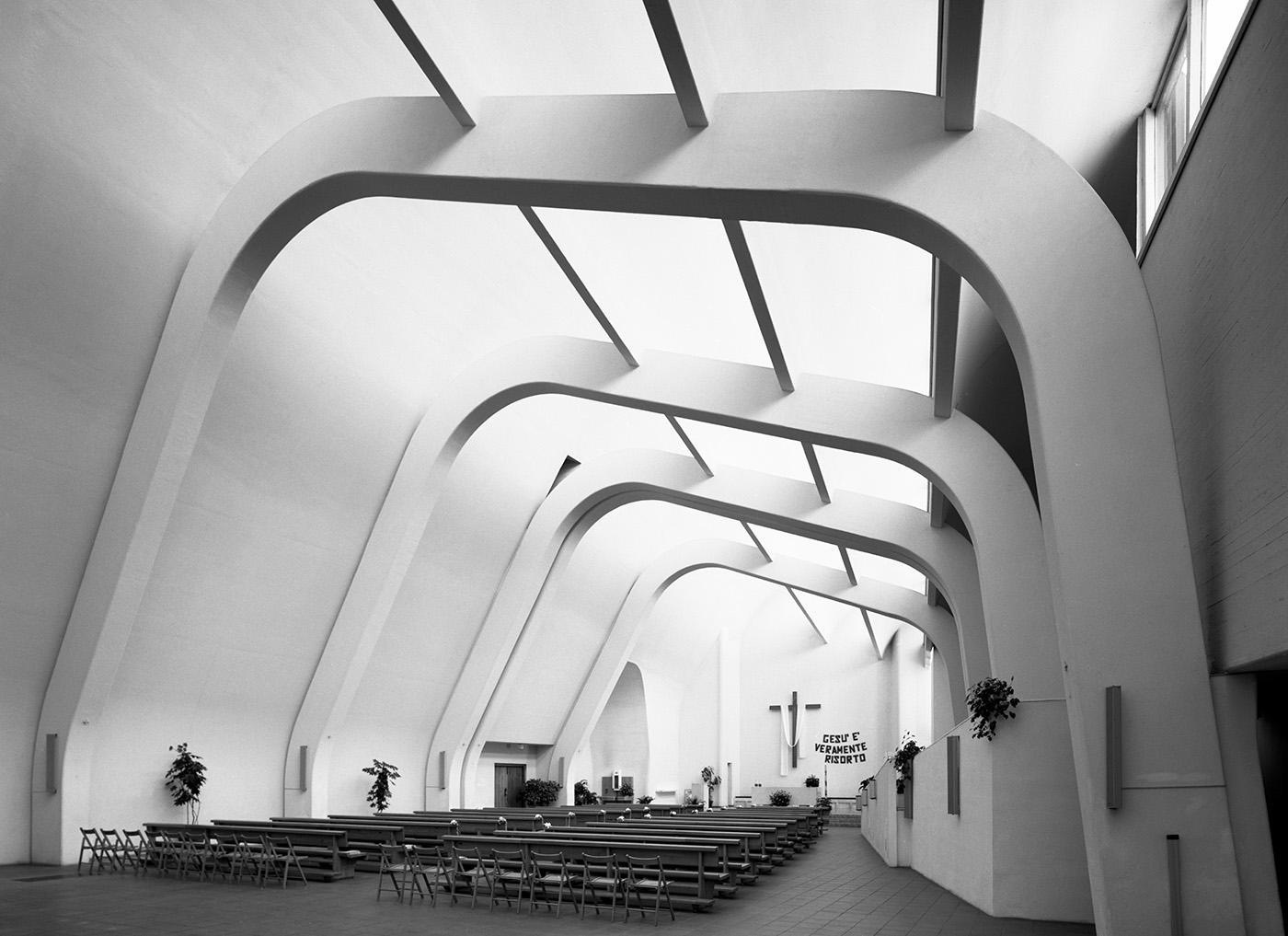The small mountain village of Riola di Vergato lies on a slope of the Apennines some forty kilometres south of Bologna, along the road to Pistoia. The ecumenically inclined Bishop of Bologna, Cardinal Giacomo Lercaro, asked Aalto in 1965 to design a small church next to the old highway bridge across the river Reno. Aalto’s initial plan from 1966 already showed the church in its final form, but it was later supplemented by a wider plan including a retirement home and a kindergarten. Plans were then further developed in 1969 and again in 1975, continuing until 1980.
As Aalto had done in Seinäjoki, Aalto laid out an enclosed piazza in front of the church, in order to enable a large congregation of thousands to participate in divine services at major religious festivals. Aalto also thought that the church itself, which normally seats a congregation of 200, could be equipped with a gigantic sliding wall in order to divide it up, according to need, into a mini-church – comprising the altar, chancel, and baptistery – and a larger room for non-religious events. The church has an asymmetrical basilica disposition of a slightly wedge-like shape; the unusual roof system consists of a stepped vault whose fragments run longitudinally on one side, while the other side slopes towards the chancel. The surfaces of the fragmented vault are glazed, so that the whole church is bathed in sunlight reflected by them. The vault system is borne by seven gently curved, asymmetrical concrete arches that emerge from the ground on one of the long sides; they recall the shapes of Aalto’s famous wood furniture.
To the left of the chancel is the vestry, which forms part of the vicar’s apartment. The baptistery is on a somewhat lower level to the right of the chancel; it has a lantern visible from the outside and a window overlooking the river below. A campanile, consisting of five parallel vertical concrete planks, rises on the far side of the forecourt, providing an optical lift as a counterpart to the sloped roof of the church. The forecourt is walled off on one of its long sides, sheltered from the ravine of the river. The opposite side is lined by a colonnade and a modest parish building housing youth clubs, meeting rooms, etc.
Explore Alvar Aalto in Italy via WebApp by TERRITORI Narrative Italian Landscape.
